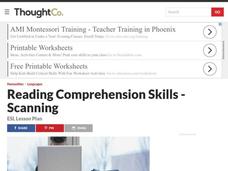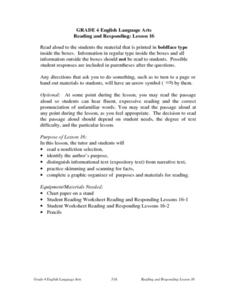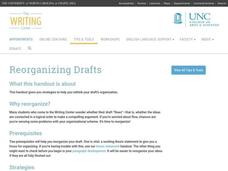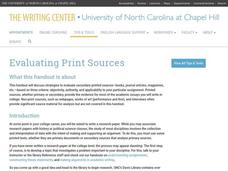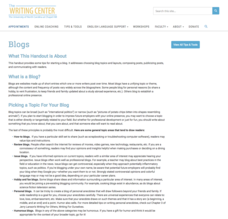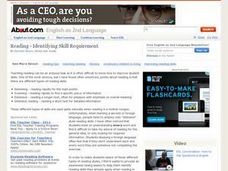Curated OER
Skimming and Scanning Information
In this career activity, students practice the real life application of reading skills. They specifically cover the tasks of skimming and scanning a text.
Curated OER
Skimming and Scanning
Students practice skimming and scanning an article to determine its main points. They develop their own questions about the article and shares them with the class. They complete a worksheet about the article to end the lesson.
Learning Station
Scan It
In this reading strategies worksheet, students will learn how to scan for information. Then students will scan a non-fiction passage about weather and complete 4 short answer questions.
Curated OER
Skimming
Students examine how to skim textual material. They read an article, and identify the main ideas by reading first and last paragraphs, topic sentences, and other organizational clues.
Curated OER
Using Print Media in the LCTL Classroom
Explore newspapers as a form of print media. They examine headlines from newspapers and infer meanings of the headlines. They skim articles for information and exchange articles between groups. They complete charts while skimming the...
Curated OER
Using Information Resources: Lesson 5
Eighth graders follow along with a teacher lead lesson to find information by skimming and scanning a resource booklet. They examine different types of resources that are available in a library. They practice skimming skills and complete...
Curated OER
Reading Comprehension - Scanning
Students use scanning as a comprehension skill when reading certain types of publications. They compare the reading technique used when reading in their mother language to those used when reading English.
Curated OER
What's Wrong - Intensive Reading
There are different types of reading meant for different texts. Discuss four of these with your emerging readers. When does one perform an extensive or intensive reading? When does one skim or scan a text? How are these all different?
Curated OER
Laurence Yep's Dragonwings
Learners read independently the novel, "Dragonwings," by Laurence Yep and make connections between a text and the world. They summarize, paraphrase, analyze and evaluate skimming and scanning techniques when reading a novel. Each student...
Curated OER
Research Skills: Evaluating Information and Sources
While this focuses on Ancient Rome, the objectives are improved research and information evaluation skills. In one class period, class members narrow their topic, research it, select the best information, log useful sources, and discuss...
Curated OER
Reading and Responding -- Lesson 16
Fourth graders work independently or in a small group to (1) read a nonfiction selection, (2) identify the author's purpose, (3) distinguish informational text from narrative text, (4) skim and scan for facts, and (5) complete a graphic...
University of Kansas
Newspaper in the Classroom
Newspapers aren't only for reading—they're for learning skills, too! A journalism unit provides three lessons each for primary, intermediate, and secondary grades. Lessons include objectives, materials, vocabulary, and procedure, and...
Polk Bros Foundation
Preview Reading
Scanning a text before getting started is a reading strategy that your pupils can use to get a general idea about a text before diving in. Give some direction to their scanning with a worksheet that includes items to check for and space...
University of North Carolina
Reorganizing Drafts
Poor organization often destroys an otherwise good paper. After writing a first draft, individuals consider the organization of ideas, a topic discussed in the 16th handout in the 24-part Writing the Paper series. The resource covers...
University of North Carolina
Writing Anxiety
Oh, the dreaded writer's block! As part of a larger paper-writing series, an invaluable resource discusses obstacles and stresses writers face. Individuals learn to identify feelings associated with anxiety, as well as strategies for...
University of North Carolina
Conciseness
Twitter has helped people learn to express their ideas in as few words as possible, but away from the 280-character limit, writers still struggle with keeping their writing short and to the point. Conciseness is the focus of a writing...
University of North Carolina
Sentence Patterns
In an ideal world, sentences in a college-level essay should feature a variety of sentence types. In reality, most papers stick to simple and compound sentences, two of the types a handout on sentence patterns discusses. Part of a larger...
University of North Carolina
College Writing
No matter how difficult high school writing may seem, college writing presents challenges of its own. The fourth in a series of 24 handouts from The Writing Center at UNC breaks down the expectations for college writing. Scholars learn...
University of North Carolina
Evaluating Print Sources
Not all sources are created equal, so how do you evaluate them? Writers learn how to evaluate print sources based on elements such as audience, tone, and argument in the sixth handout of 24 in the Writing the Paper series from the...
University of North Carolina
Paragraph Development
There's no set length for a good paragraph, but the short block of text should contain key components. A handout on paragraphs, the 12th in a series of 24, outlines a five-step process for paragraph development. Additionally, the handout...
Curated OER
Who in the World Is....?
Students access how to scan the newspaper for relevant information. They become acquainted with the sections of the newspaper. Students practice summarizing what they have learned.
Curated OER
News Quiz: October 21, 2011
What does your class know about the events occurring on October 21, 2011? Have them skim this issue of the New York Times to answer each of the five related multiple choice questions. A perfect task for early finishers.
University of North Carolina
Blogs
The blogosphere may be overwhelmed with content, but there's still room for unique points of view. Creating a blog that stands out, however, is the bigger challenge. A handout on blogs, part of a series of handouts on specific writing...
Curated OER
Reading - Identifying Skill Requirement
Middle schoolers discuss the different types of reading styles. They are then given situations in which they are to assign it a reading style.
Other popular searches
- Skim and Scan Text
- Skim Scan and Highlight
- Skim Scan Skills
- Skim and Scan Techniques
- Reading Skim Scan








